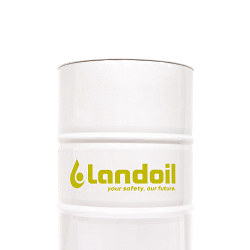< Lubricants for machine tools Neat cutting oil
Whole cutting oil is a key element in the landscape of machine shops and manufacturing industries. This often underestimated fluid plays a crucial role in ensuring the efficiency and longevity of machine tools, as well as improving the quality of the end product. In this in-depth look, we will explore in detail what whole cutting oil is, its applications, the benefits of its use and answer some of the most frequently asked questions in the industry.
Understanding whole cutting oil
Whole cutting oil is a lubricant used primarily in metalworking processes. Unlike emulsifiable oils, which are mixed with water, whole oil is used in its pure form. This type of oil is formulated to withstand the high temperatures and pressures generated during cutting, drilling and milling operations. Its chemical composition is designed to reduce friction between the tool and the workpiece, minimising tool wear and improving the surface finish of the product.
Applications and uses of whole cutting oil
Whole cutting oil is used in a wide range of industrial applications. It is particularly useful in machining processes that require precision and high surface quality, such as turning, milling and grinding. Its ability to dissipate heat and reduce friction makes it ideal for machining difficult materials such as alloy steels, titanium and nickel alloys.
In machine shops, whole cutting oil is applied directly to the contact zone between the tool and the workpiece. This can be done through centralised lubrication systems or through manual application. The choice of method depends on the complexity of the process and the specific production requirements.
Advantages of using whole cutting oil
The adoption of whole cutting oil offers numerous advantages that are reflected in both the quality of the end product and operational efficiency. The main benefits include:
1. Reduced tool wear: whole cutting oil creates a lubricating barrier that reduces friction between the tool and the material being machined, prolonging tool life.
2. Improved surface finish: Thanks to its ability to reduce friction and dissipate heat, whole cutting oil contributes to smoother, imperfection-free surfaces.
3. Increased machining speed: Reduced friction and effective heat management enable higher cutting speeds, improving overall productivity.
4. Protection against corrosion: Some whole cutting oils contain anti-corrosive additives that protect both tools and machined parts against oxidation.
5. Safety and health: High-quality whole cutting oils are formulated to minimise the formation of fumes and mists, contributing to a safer working environment.
Frequently asked questions about whole cutting oil
In the context of machine shops, questions often arise concerning the use and handling of whole cutting oil. Here are some of the most common:
- What is the difference between whole cutting oil and emulsifiable oil?
Whole cutting oil is used in its pure form, while emulsifiable oil is mixed with water to form an emulsion. Whole oil offers superior lubrication and greater protection against wear, but can be more expensive and requires more careful waste management.
- How do I choose the right whole cutting oil for a specific application?
The choice of whole cutting oil depends on various factors, including the type of material being processed, the type of machining operation and the operating conditions. It is important to consult the product data sheets and, if necessary, seek expert support to select the most suitable oil.
- What are the environmental considerations when using whole cutting oil?
Whole cutting oils must be handled correctly to avoid negative environmental impacts. It is essential to follow local waste disposal regulations and consider adopting biodegradable or environmentally friendly oils.
Conclusions
Whole cutting oil is an essential component for machine shops and manufacturing industries that strive for excellence in metalworking. Its ability to improve product quality, reduce operating costs and extend tool life makes it a strategic choice for many industrial applications. Understanding its characteristics and benefits allows you to optimise your production processes and maintain a competitive advantage in the market.
Read More Read Less 
































